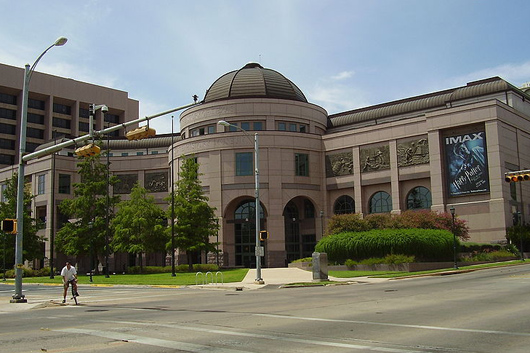JACKSONVILLE, Texas (AP) – Nearly two centuries after flintlock muskets weighed heavy in the hands of soldiers of the Republic of Texas, while defending the Lone Star frontier from Mexican encroachment, only a handful the historical firearms are left.
One in Jacksonville at Lon Morris College will be displayed beginning in May or June at the Bob Bullock Texas State History Museum in Austin.
“The musket is one of only five in the world,” said Scott Gilpin, vice president of development at Lon Morris.
The 1816 Model .69 caliber flintlock, muzzle-loaded musket is a hair shy of 58 inches long, with a barrel length of 41-5/8 inches, and is made of mild steel finished in a grey patina, with a stock made of American Black Walnut. It weighs 10 pounds.
“It has a flint mechanism which sparks a spark into the pan which goes into the barrel which sets the gun off. They fired a charge of black powder and a .69 caliber lead ball,” said David Jackson. “It was in the days of the muzzle-loaded era, somewhat like the Davy Crockett time when flintlock muskets were used.”
On the lock is a five-pointed star with “Texas” stamped below it. The weathered words “Tryon, Philadelphia” are marked on the steel beneath the hammer.
“Very few people have probably even seen one,” said Elizabeth Appleby, curator of the San Jacinto Museum of History. “What makes this so important is that it was actually ordered by the Republic to arm the troops.”
The musket, valued at $100,000, is one of 1,500 muskets ordered in 1839 from Tryon Son & Company in Philadelphia by the Republic of Texas. To add to the musket’s exclusivity, only a few hundred were delivered.
“There were lots of little problems with the ordering and canceling,” Appleby said.
Due to a cholera epidemic in the eastern United States, only 860 muskets were delivered by 1841 to Galveston, where they were then given to soldiers in Houston and Austin. The Republic was also suffering financially and could not afford to purchase the remaining 640 muskets. Records are unclear if the Republic later fulfilled the contract.
The Republic needed arms during the era because of the constant strife between Texas and Mexico, Jackson said.
“Texas was subject to being taken back by the Mexicans even though we won the battle of San Jacinto and Santa Anna signed the treaty of Velasco,” he said. “He had been a prisoner when he signed it so when he got back to Mexico when he was released he abrogated the treaty and said that he had signed it under duress. So a state of war existed between the Republic of Texas and Mexico for its entire existence.”
The muskets were carried during the Texas-Santa Fe Expedition of 1841. Republic of Texas muskets being preserved today are in Texas and New Mexico.
“The Texans were forced to surrender to (New Mexico) Governor (Manuel) Armijo and they were ordered to fire their rifles into the air and lay them on the ground at the surrender,” Appleby said. “The New Mexicans gathered up the long rifles, placed them in a wagon and carted them off and possibly destroyed them as only a few are known.”
The musket has been in East Texas since it was shipped from Philadelphia in 1841 and given to an ancestor of Sen. John Tower, according to a newspaper article of unknown origin published October 5, 1929, furnished by Gilpin.
“Senator John Towers’ dad (Joe Tower) used to be the minister of the First Methodist Church here and that’s how Lon Morris got it,” said Shelley Cleaver, vice chairman of the Cherokee County Historical Commission. “John Tower was a United States senator from Texas that was raised here in Jacksonville.”
The Tower family donated the musket to Lon Morris in the 1970s, where it stayed for three decades in the president’s office, its worth unbeknownst to anyone. The musket was then sent to Jackson Armory in Dallas to be authenticated. It has been in a vault at Jackson Armory for five years.
The musket is one of only a few in their original condition, flintlock, Jackson said.
“They converted some flintlocks to the percussion system (during the Civil War) because it was a more reliable method of ignition of the powder, but this particular one escaped being converted to percussion which makes it very valuable,” he said.
Copyright 2011 Associated Press. All rights reserved. This material may not be published, broadcast, rewritten, or redistributed.
AP-WS-03-02-11 0635EST

ADDITIONAL IMAGE OF NOTE




